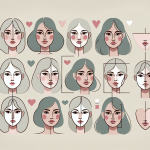Types Of Pink
Pink is a color that is often associated with femininity, love, and affection. It is a color that has a rich history, and it has been used in various ways throughout the centuries. There are many different types of pink, each with its own unique shade, tone, and meaning.
Historically, pink was not a common color for dye or paint until the 18th century. It was a relatively rare color that was primarily associated with flowers. However, in the 20th century, pink became much more popular, and it is now a color that is commonly used in fashion, interior design, and branding.
Pink has a strong psychological and symbolic significance. It is often associated with love, romance, and femininity. It is also associated with kindness, compassion, and sensitivity. In some cultures, pink is associated with good luck, while in others, it is associated with death and mourning. Understanding the different types of pink can help you choose the right shade for your project and convey the right message.
Key Takeaways
- Pink has a rich history and has been used in various ways throughout the centuries.
- Pink has a strong psychological and symbolic significance, and it is associated with love, romance, femininity, kindness, and compassion.
- Understanding the different types of pink can help you choose the right shade for your project and convey the right message.
Historical Significance of Pink

Pink has a rich history that dates back to the 18th century. In the 1700s, pink was a popular color for men’s clothing. It was seen as a masculine color that represented power and strength. However, during the 19th century, the meaning of pink changed, and it became associated with femininity.
18th Century Pink
During the 18th century, pink was a popular color for men’s clothing. It was seen as a strong and powerful color that represented masculinity. Men wore pink waistcoats, coats, and even breeches. Pink was also used to decorate men’s homes and was considered a fashionable color.
Pink and Femininity
In the 19th century, the meaning of pink changed, and it became associated with femininity. Men in the Western world started wearing dark, sober colors, and pink became a symbol of delicacy and femininity. Pink was also associated with romance and love, and it was often used to decorate women’s clothing and accessories.
Today, pink is still associated with femininity, but it has also become a popular color for men’s clothing and accessories. It is a versatile color that can be used to represent a wide range of emotions, from love and romance to friendship and gratitude.
In conclusion, pink has a rich history that dates back to the 18th century. It has been associated with masculinity, femininity, romance, and love. Today, it is a versatile color that is used to represent a wide range of emotions and is popular in both men’s and women’s fashion.
Psychology and Symbolism
Pink is a color that has been associated with various emotions and characteristics throughout history. In this section, we will explore the psychology and symbolism of pink.
Pink in Youth and Romance
Pink is often associated with youth and femininity. It is a popular color for baby clothes, toys, and accessories. Pink is also used to represent sweetness, innocence, and tenderness. In romantic contexts, pink is often associated with love, romance, and affection. It is a common color used in Valentine’s Day decorations and gifts.
Cultural Associations
In many cultures, pink is considered a feminine color. However, this association is not universal. In some cultures, pink is associated with masculinity or is considered a neutral color. For example, in Japan, pink is often used to represent spring and cherry blossoms, which are not gender-specific.
Pink is also used in some cultures to represent good health and well-being. In traditional Chinese medicine, pink is believed to have healing properties and is used to treat various ailments.
Overall, the psychology and symbolism of pink are complex and varied. While it is often associated with youth, femininity, and romance, its cultural associations and meanings can vary widely.
Varieties of Pink
Pink is a color that is often associated with femininity, love, and tenderness. There are many different shades of pink, each with its unique characteristics and associations. In this section, we will explore some of the most common and uncommon varieties of pink.
Shades of Light Pink
Light pink is a delicate and soft shade of pink that is often associated with innocence, youth, and sweetness. Some of the most popular shades of light pink include baby pink, pale pink, and rose pink. Baby pink is a pale shade of pink that is often used in baby clothing and accessories. Pale pink is a soft and muted shade of pink that is often used in interior design and fashion. Rose pink is a warm and romantic shade of pink that is often associated with love and affection.
Deep and Vibrant Pinks
Deep and vibrant pinks are bold and eye-catching shades of pink that are often associated with passion, energy, and excitement. Some of the most popular shades of deep and vibrant pinks include hot pink, neon pink, and fuchsia. Hot pink is a bright and intense shade of pink that is often used in fashion and accessories. Neon pink is a fluorescent shade of pink that is often used in advertising and marketing. Fuchsia is a bold and vibrant shade of pink that is often used in interior design and fashion.
Uncommon and Unique Pinks
There are many uncommon and unique shades of pink that are not as well known as other shades of pink. Some of these shades include dusty pink, dark pink, and carnation pink. Dusty pink is a muted and subtle shade of pink that is often used in interior design and fashion. Dark pink is a rich and intense shade of pink that is often associated with luxury and sophistication. Carnation pink is a warm and inviting shade of pink that is often used in floral arrangements and decorations.
In conclusion, pink is a versatile and beautiful color that comes in many different shades and varieties. Whether you prefer light and delicate shades of pink or bold and vibrant shades of pink, there is a shade of pink that is perfect for any occasion.
Color Science of Pink
Pink is a color that is created by mixing red and white. It is a hue that is often associated with femininity, love, and sweetness. In the world of color science, pink is a fascinating color. Here are some of the key facts about pink that you should know.
Pink in the RGB Spectrum
RGB stands for red, green, and blue, which are the primary colors of light. All colors in the visible spectrum can be created by mixing different amounts of these three colors. In the RGB spectrum, pink is created by mixing red and green light. The amount of each color that is used determines the shade of pink that is created.
Pink can be represented in the RGB spectrum using hexadecimal codes. The hex code for pink is #FFC0CB. This code represents a shade of pink that is often referred to as “bubblegum pink.” Other shades of pink can be created by changing the values of the red and green components of the code.
CMYK Codes for Printing
CMYK stands for cyan, magenta, yellow, and black, which are the four colors of ink used in most color printing. These colors are mixed together in different amounts to create all of the colors in a printed image. Pink is created in the CMYK system by mixing magenta and yellow ink.
The CMYK code for pink is C=0, M=47, Y=15, K=0. This code represents a shade of pink that is similar to the “bubblegum pink” in the RGB spectrum. Other shades of pink can be created by adjusting the values of the magenta and yellow components of the code.
In conclusion, pink is a color that is created by mixing red and white. It can be represented in the RGB spectrum using hexadecimal codes and in the CMYK system using numerical codes. Understanding the science behind pink can help you create the perfect shade for your next project.
Pink in Nature and Design
Pink is a popular color that can be found in nature, and it has also found its way into fashion, graphic design, and interior design. The color pink is often associated with femininity, but it is not limited to this gender. Pink can be used to convey a range of emotions, from love and romance to playfulness and whimsy.
Floral Inspirations
Pink flowers are a common sight in nature, and they can be a source of inspiration for designers and artists alike. Cherry blossoms, for example, are a popular subject in Japanese art and design. Their delicate pink petals are often used to symbolize the transience of life and the beauty of impermanence.
Roses are another popular flower that come in a variety of shades of pink. They are often associated with love and romance, and their beauty has inspired poets and artists for centuries. Pink roses are a popular choice for weddings and other romantic occasions.
Interior Design and Fashion
In interior design, pink is often used to create a soft and soothing atmosphere. Pale pink walls can make a room feel warm and inviting, while brighter shades of pink can add a pop of color and energy. Pink can be combined with other colors to create a range of moods and styles.
In fashion, pink is a versatile color that can be dressed up or down. Pink dresses and accessories are a popular choice for weddings and other formal events, while casual pink t-shirts and sneakers are a popular choice for everyday wear. The pink flamingo has also become an iconic symbol of kitsch and camp, often appearing on clothing and accessories.
In conclusion, pink is a versatile color that can be used in a variety of ways in nature and design. Whether it’s the delicate petals of a cherry blossom or the playful pink flamingo, pink can add a touch of whimsy and charm to any setting.






